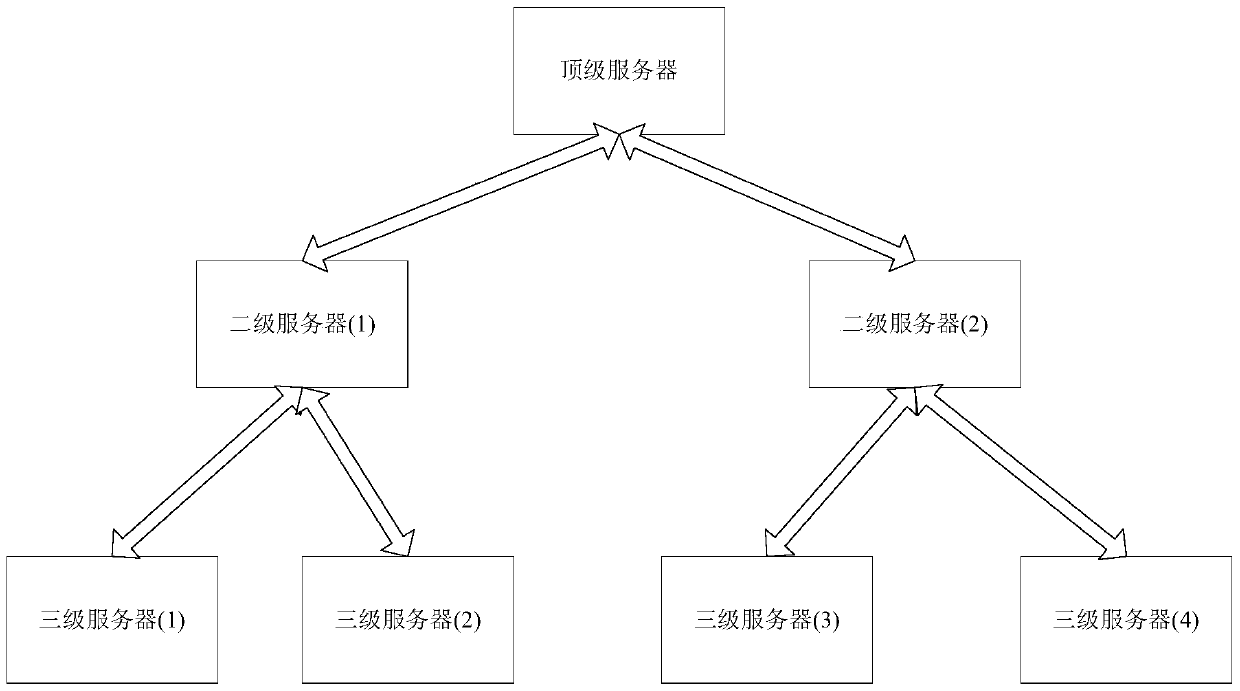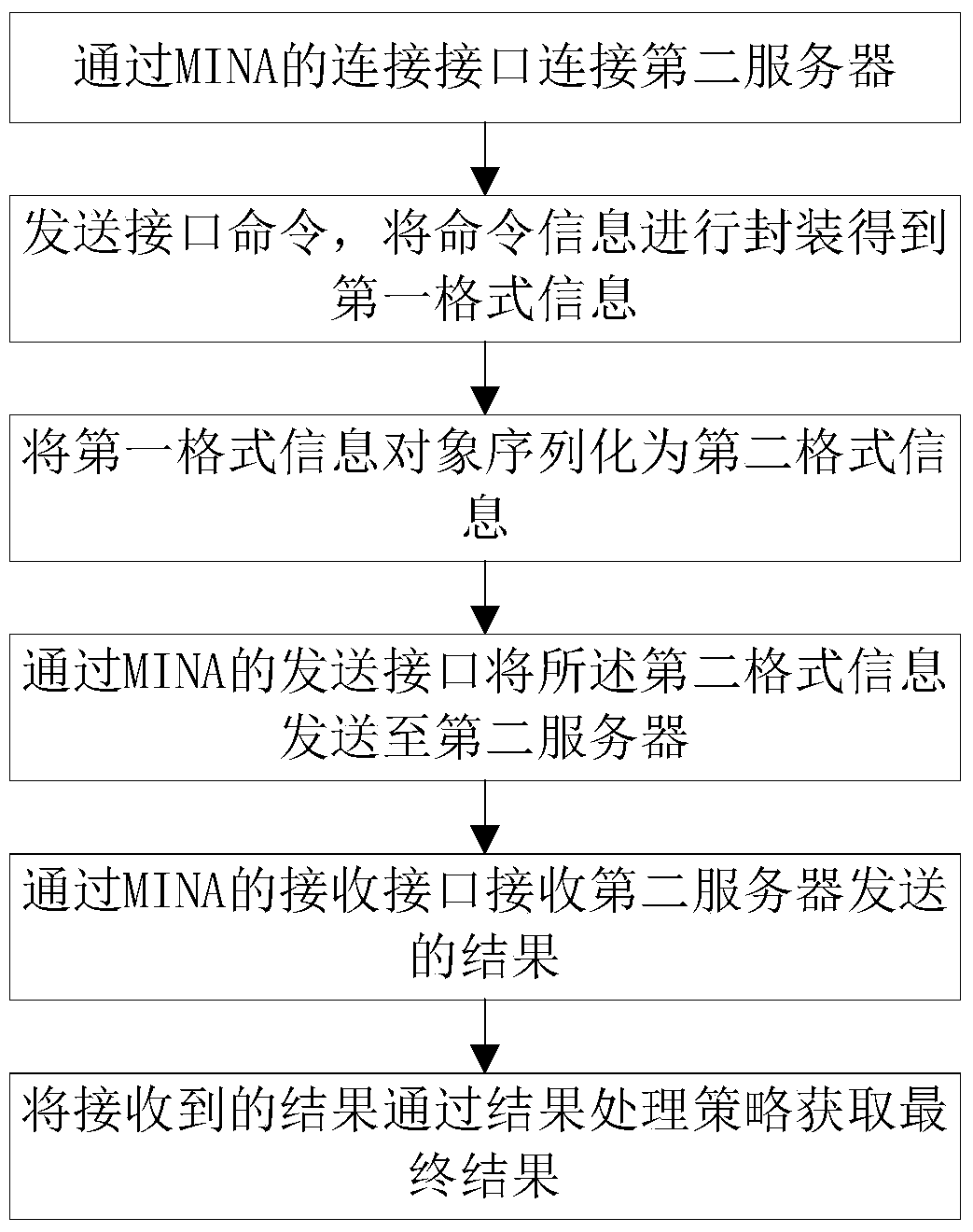A data communication method and server among multi-level servers
A data communication and server technology, applied in the field of distributed systems, can solve problems such as poor performance, complex application framework, and does not support active server push, etc., to achieve good performance, prevent communication interruption, and simple framework
- Summary
- Abstract
- Description
- Claims
- Application Information
AI Technical Summary
Problems solved by technology
Method used
Image
Examples
Embodiment 1
[0082] This embodiment provides a method for data communication between multi-level servers. This embodiment is the first server-side processing method, such as figure 2 shown, including the following steps:
[0083] S1: the first server connects to the second server through the connection interface of MINA. The first server can be connected to one or more servers through the connection interface of MINA. In this embodiment, one server, that is, the second server, is used as an example.
[0084] S2: The first server sends an interface command, and encapsulates the command information to obtain information in a first format.
[0085] The interface command is a call command, that is, the first server calls the information of the second server. At this time, the first server is an upper-level server, and the second server is a lower-level server. For example, a province has three levels of platforms: provincial level, city level, and county level. The provinces and cities are ...
Embodiment 2
[0096] This embodiment provides a method for data communication between multi-level servers. This embodiment is the first server-side processing method, such as image 3 shown, including the following steps:
[0097] S1: the first server connects to the second server through the connection interface of MINA. The first server can be connected to one or more servers through the connection interface of MINA. In this embodiment, one server, that is, the second server, is used as an example.
[0098] S2: The first server sends an interface command, and encapsulates the command information to obtain information in a first format.
[0099] The interface command is a push command, that is, the first server pushes information to the second server. At this time, the first server is a lower-level server, and the second server is a higher-level server. For example, a province has three levels of platforms: provincial, municipal, and county. The provinces and cities are connected, and th...
Embodiment 3
[0108] This embodiment provides a method for data communication between multi-level servers. This embodiment is a second server-side processing method, such as Figure 4 shown, including the following steps:
[0109] T1: The second server connects to the first server through the connection interface of MINA, and saves the corresponding connection after the connection is successful.
[0110] T2: The second server receives the interface command and the second format information sent by the first server through the receiving interface of the MINA, where the interface command is a calling command.
[0111] T3: The second server deserializes the information in the second format into information in the third format. Deserializing the information in the second format into the information in the third format uses the Xstream technology, and the Xstream technology is as described in Embodiment 1. The information in the third format is information in JavaBean format.
[0112] T4: The...
PUM
 Login to View More
Login to View More Abstract
Description
Claims
Application Information
 Login to View More
Login to View More - R&D
- Intellectual Property
- Life Sciences
- Materials
- Tech Scout
- Unparalleled Data Quality
- Higher Quality Content
- 60% Fewer Hallucinations
Browse by: Latest US Patents, China's latest patents, Technical Efficacy Thesaurus, Application Domain, Technology Topic, Popular Technical Reports.
© 2025 PatSnap. All rights reserved.Legal|Privacy policy|Modern Slavery Act Transparency Statement|Sitemap|About US| Contact US: help@patsnap.com



